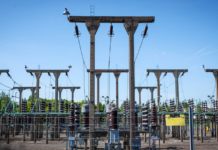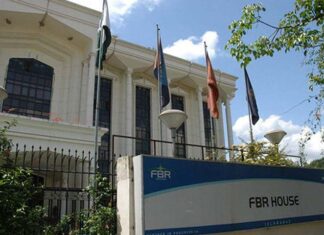Wall Street suffered its worst two-day rout since the pandemic on Friday, with the Nasdaq Composite officially entering a bear market and the Dow Jones Industrial Average falling into correction territory. The sell-off came amid mounting fears of a global recession triggered by former President Donald Trump’s sweeping new tariffs.
All three major U.S. indexes — the Dow, S&P 500, and Nasdaq — posted their steepest two-day declines since the coronavirus panic of 2020. From Thursday to Friday, the Dow plunged 9.3%, the S&P 500 fell 10.5%, and the tech-heavy Nasdaq dropped 11.4%.
The collapse in investor confidence followed Trump’s announcement late Wednesday of the highest U.S. tariff levels in over a century, escalating trade tensions with key global partners. Investors dumped equities en masse, fearing both the inflationary impact of the new economic regime and potential retaliation from trading partners.
The CBOE Volatility Index — widely known as Wall Street’s “fear gauge” — closed at its highest level since April 2020, underscoring the deep uncertainty gripping markets.
Friday alone saw a record-breaking 26.79 billion shares change hands on U.S. exchanges, surpassing the previous record of 24.48 billion shares traded on January 27, 2021.
By the close:
-
Nasdaq fell 962.82 points (-5.82%) to 15,587.79, marking a bear market drop of over 22% from its record high of 20,173.89 on December 16.
-
Dow Jones sank 2,231.07 points (-5.50%) to 38,314.86, confirming a correction from its all-time high of 45,014.04 on December 4.
-
S&P 500 lost 322.44 points (-5.97%) to finish at 5,074.08, its lowest close in 11 months.
“The market is clearly voting against these policies. How bad it gets now depends on how far the administration is willing to go,” said Steve Sosnick, chief strategist at Interactive Brokers.
International backlash began to unfold as China’s finance ministry announced it would impose a 34% tariff on all U.S. goods starting April 10. Leaders of Britain, Australia, and Italy also began talks on possible coordinated responses.
JP Morgan revised its global recession forecast upward, projecting a 60% chance of a downturn by year-end, compared to 40% previously.
Federal Reserve Chair Jerome Powell made his first public comments since the tariff announcement, warning that the unexpectedly large levies could stoke inflation and slow growth — presenting a complex challenge for U.S. monetary policy.
The flight to safety drove yields on the 10-year U.S. Treasury note below 4%, further pressuring bank stocks. The S&P Banks Index dropped 7.3% on Friday alone.
All 11 sectors in the S&P 500 ended the day down more than 4.5%. The energy sector led losses for the second consecutive day, falling 8.7% in tandem with a 7.3% plunge in U.S. crude oil prices.
For the week, the S&P 500 dropped 9.1%, Dow Jones lost 7.9%, and the Nasdaq tumbled 10%.
“We’re in the Wild West of a trade war right now,” said Mariam Adams, managing director at UBS Wealth Management, capturing the mood on Wall Street as investors brace for further volatility.























